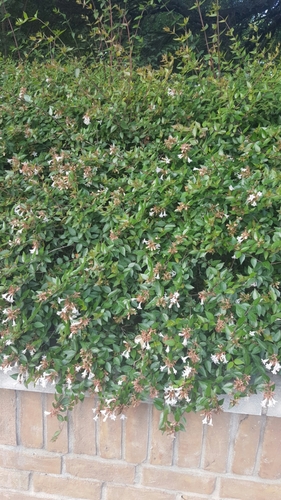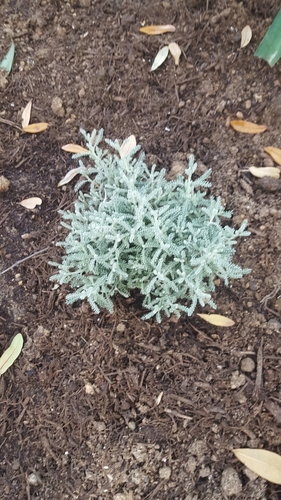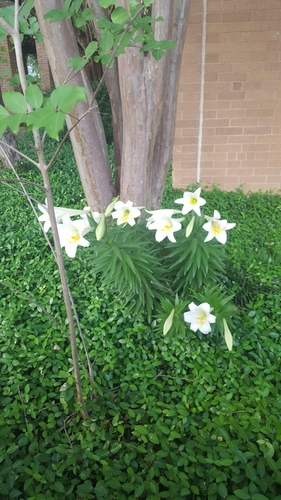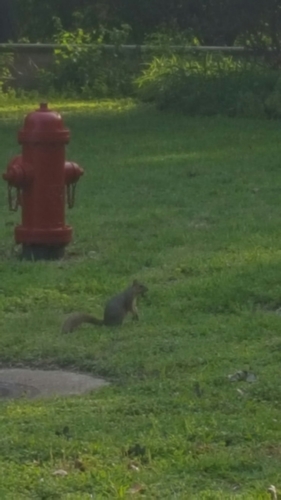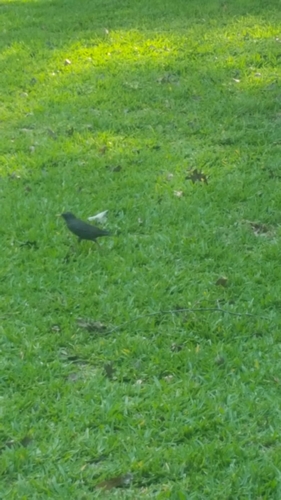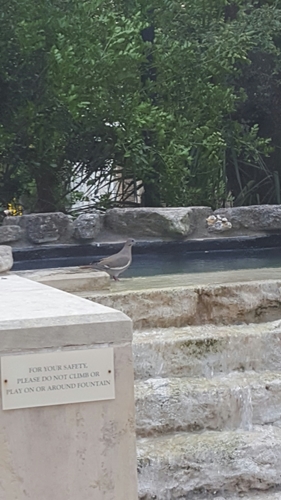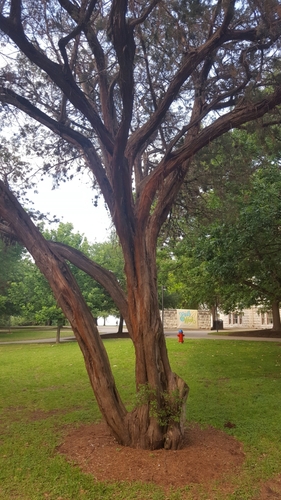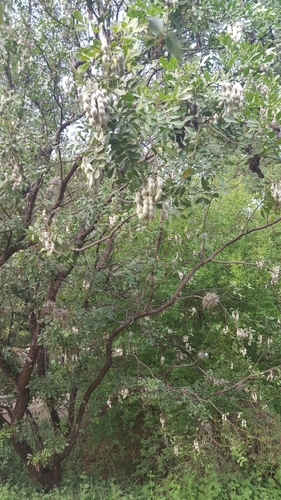
Unfortunately, I wasn’t able to identify this tree either. As you can see by the picture, its branches start growing very close to the ground, making it seem like it has multiple trunks. What I found most interesting about this tree are the numerous, thin branches that sprout out of the larger ones. They almost seem like they aren’t part of the tree at all; like they’re vines growing on the tree rather than branches.

